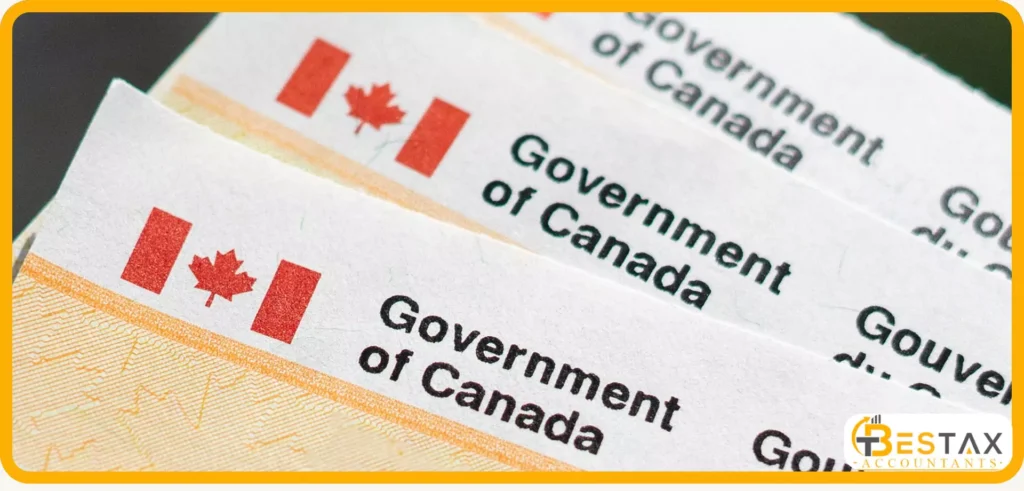The Digital Services Tax Act officially came into force on June 28, 2024. This new law brings in the Digital Services Tax (DST) in Canada.
However, Canada has officially cancelled the Digital Services Tax (DST). On June 30, 2025, the federal government announced it will not move forward with implementing the DST, which was originally scheduled to apply retroactively to January 1, 2022.
But let’s see what actually Canadian Digital Services Tax was and covered.

Background and Introduction
The Department of Finance Canada shared details about the Digital Services Tax Act. They explained how it would work and asked for feedback from businesses and other groups.
The DST was first mentioned in the 2020 Fall Economic Statement. More details came out in Budget 2021. The government said they prefer a global approach to digital taxation. But, until such a system is ready, they decided to move ahead with their own Digital Tax Canada.
Internationally, 137 countries agreed to a two-pillar plan to handle global digital taxation. Canada is working with others to put this in place. However, to protect Canadians, the DST will apply until the international rules start.
This shows that Canada’s Digital Services Tax Implementation is a temporary step but still an important one for the economy.
DST Rate and Who It Affects
The Digital Services Tax applies at a 3% rate. It covers revenue from digital services that rely heavily on Canadian users’ engagement, data, or content.
Large businesses are the focus. They must meet two revenue limits:
- First, the business or group must have global revenues of at least €750 million.
- Second, it must earn more than $20 million from Canadian digital services in one year.
If a company is part of a bigger group, the numbers are counted together. This system ensures fair taxation on digital services under Canada’s rules.
What Revenue Is Taxed?
The DST applies to four main types of revenue:
- Online marketplace services: Revenue from platforms that connect sellers and buyers.
- Online advertising services: Revenue from targeted ads shown online.
- Social media services: Revenue from running social media platforms.
- User data sales: Revenue from selling or licensing Canadian users’ data.
These services are big parts of the digital economy and taxation is designed to cover them clearly.
How Revenue Is Linked to Canada
Only revenue connected to Canadian users is taxed. The rules for linking revenue to Canada vary by service:
- For online marketplaces, if both buyer and seller are in Canada, all revenue counts.
- For ads, if the ad is shown to a Canadian user, it is counted.
- For social media, Canada looks at the share of users located in the country.
- For user data, if the data comes from Canadian users, it is taxed.
How Canada Determines User Location
Businesses can use billing addresses, shipping info, GPS data, or IP addresses to find where users are based. If there is good reason to believe a user is in Canada, then that revenue is taxed here. However, short-term visitors, like tourists, are not counted as Canadian users.
$20 Million Deduction Rule
Not all in-scope revenue is taxed. The first $20 million of Canadian-sourced revenue is exempt.
If businesses are part of a group, they must share this deduction. Each member gets a part based on their share of the group’s Canadian revenue.
This helps ensure that only major digital companies are impacted, supporting fairness in Canada’s tech industry tax.
Group Administration Rules
Managing taxes for big groups can get messy. To simplify things, businesses in the same group can choose one company to handle DST paperwork and payments.
Also, if one company in the group does not pay, others can be made to pay instead. This keeps the system strong and avoids tax gaps across the digital economy and taxation.
Treatment for Income Tax Purposes
When it comes to income tax, the Digital Services Tax (DST) is treated like other non-income taxes.
Whether a business can deduct DST depends on regular tax rules. Mainly, if the DST was spent to earn the business’s income, it may be deducted.
However, DST cannot be used to lower the amount of Canadian income tax a business owes directly. This fits within Canada’s broader tax policy in Canada for 2025.
Now, let’s talk about which businesses must register.
Who Must Register for Digital Services Tax in Canada
Foreign and Canadian businesses must apply for a DST program account if they meet certain conditions.
If in any of the 2022, 2023, or 2024 calendar years:
- The business earned any Canadian digital services revenue.
- The business, or its group, had total revenue of at least €750 million.
- The business, or its group, had more than CAN$10 million in Canadian digital services revenue.
If these apply, registration must have been done by January 31, 2025.
How to Register for DST
To register, businesses need to gather some important information, like:
- Legal name and Business Number (BN)
- Incorporation details
- Physical and mailing addresses
- Officer or director’s contact information
Once ready, businesses must complete the DST registration web form.
After submitting, you will receive a confirmation number. Keep it safe. It proves you have applied.
Filing a DST Return
The first DST return will cover Canadian digital services revenue earned from January 1, 2022.
Businesses must file their DST return by June 30, 2025, if during 2022, 2023, or 2024:
- They earned any Canadian digital services revenue.
- They or their group had total revenue over €750 million.
- They or their group had over CAN$20 million in Canadian digital services revenue.
If you meet these rules, you must file.
This filing process supports the broader digital economy and taxation goals set by Canada.
Who Can File the Return
If needed, businesses can let a designated entity file on their behalf, like professional accountants. They handle everything for you from bookkeeping to filing DST return.
Before You File
Before starting, businesses need to collect:
- Business name and DST program account number
- Contact person’s name and phone number
- Financial details for 2022, 2023, and/or 2024, including:
- Total revenue
- Canadian online marketplace services revenue
- Canadian online advertising services revenue
- Canadian social media services revenue
- Canadian user data revenue
- Total Canadian digital services revenue (CDSR)
- Total revenue
They must also figure out deductions and taxable CDSR to calculate their DST liability properly.
If a business changed consolidated groups during the year, it must share details for each interval separately.
How to File a DST Return
Businesses must file their DST return through an Application Programming Interface (API) using a JSON schema.
Here’s the process:
- Request the Digital Services Tax Return Submission Guide by email.
- Complete certification testing using CRA’s system starting April 7, 2025.
- Once certified, use your token and access code to submit the DST return.
Following these steps ensures you meet the filing rules under Canada’s cross-border digital taxation system.
Keeping Records
Businesses must keep all DST records for at least eight years.
These records show that the business and its group members followed the rules of the Canadian Government Digital Services Tax.
Good record-keeping helps businesses stay ready for any future checks under Canada’s growing digital economy and taxation laws.
Penalties Under the Digital Services Tax (DST) in Canada
Following Canada’s Digital Services Tax Law, businesses must meet their DST responsibilities. If they don’t, penalties can apply.
Let’s go over the different penalties businesses might face under the Canadian Government Digital Services Tax rules.
Failure to Register
If a business must register but does not do so when required:
- It will face a penalty of $20,000 for:
- The calendar year it should have registered,
- The year it finally registers (if different),
- And each calendar year between those two points.
- The calendar year it should have registered,
This penalty is serious and shows how important it is to register on time under Canada’s digital tax policy.
Failure to File a Return
If a business fails to file its DST return when it should:
- It will pay a penalty made up of:
- 5% of unpaid DST for that year, plus
- 1% extra for each complete month the return is late, up to 12 months.
- 5% of unpaid DST for that year, plus
This penalty encourages businesses to stay on schedule and support the smooth operation of taxation on digital services.
But if a business keeps missing filings, penalties get even tougher.
Repeated Failure to File
If a business fails again after already being penalized in the past three years:
- It will face a higher penalty:
- 10% of unpaid DST for that year, plus
- 2% extra for each complete month the return is late, up to 20 months.
- 10% of unpaid DST for that year, plus
False Statements or Omissions
If a business knowingly provides wrong information or leaves out important details:
- It will face a penalty that is the greater of:
- $5,000, or
- 25% of the amount linked to the wrong or missing information.
- $5,000, or
This applies whether the mistake affects the amount of DST a company must pay, or the refund it tries to claim. This strict rule ensures honesty in the fast-growing world of cross-border digital taxation.
Failure to Provide Information
If a business does not give the CRA the required information or records:
- It will face an extra penalty of $2,500 for each failure.
However, if the missing information is about another business and a real effort was made to get it, no penalty will apply.
This rule ensures that businesses cooperate fully with Canada’s tax policy on digital services and foreign companies.
Final Word
The cancellation of the Digital Services Tax in July 2025 marks a major shift in Canada’s approach to taxing the digital economy. While the DST will not be enforced, it served as a signal that governments worldwide are rethinking how digital companies contribute to national tax systems.
Global businesses should remain vigilant as Canada and other nations work toward a permanent global digital tax solution under the OECD.
Quick FAQs
1. What is the Digital Services Tax in Canada?
The Digital Services Tax (DST) is a 3% tax on certain revenues earned by large businesses from digital activities involving Canadian users. It covers online marketplaces, ads, social media, and user data sales.
2. How does the Digital Services Tax affect Canadian businesses?
Canadian businesses that meet certain size and revenue thresholds must register, file DST returns, and pay the tax if they earn revenue from digital services involving Canadian users. Smaller businesses are generally not affected.
3. What is Canada’s digital tax for online services?
Canada’s digital tax for online services is the DST. It applies to large businesses that offer digital services like marketplaces, online ads, social media platforms, and the selling of user data.
4. How will the Digital Services Tax impact tech companies in Canada?
Large tech companies operating in Canada will have to pay the DST on revenue earned from Canadian users. This will increase their costs and may impact their pricing, investment, and operations.
5. Will Canada impose digital taxes on foreign tech companies?
Yes. Canada’s Digital Services Tax applies to both foreign and domestic companies if they meet the size and revenue thresholds. This includes tech giants based outside Canada.
6. What does the Canadian Digital Services Tax mean for global businesses?
Global businesses earning revenue from Canadian users must register, track their Canadian-sourced revenue, file DST returns, and pay the tax if required. It adds a new layer of compliance for companies worldwide.
Disclaimer: The information provided in this blog is for general informational purposes only. For professional assistance and advice, please contact experts.




